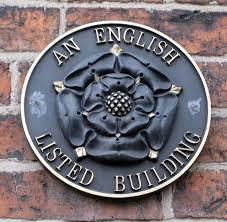Understanding Listed Properties in the UK: What They Are and Why They Matter

The UK’s architectural landscape is filled with historic buildings, each with stories woven into the fabric of British history. Many of these structures are listed properties, legally protected due to their historical, architectural, or cultural significance. Here’s a breakdown of what listed properties are, the types of listings, and what it means to own one.
1. What is a Listed Property?
A listed property in the UK refers to a building or structure recognized for its architectural or historic significance. These buildings are recorded on the National Heritage List for England, maintained by Historic England. When a building is listed, it gains legal protection, meaning that any alteration, demolition, or extension requires special permission from local authorities. This protection aims to preserve the building’s character and ensure its historical integrity is not compromised .
2. Types of Listed Properties
Listed properties in the UK are divided into three categories, or “grades,” based on their significance:
• Grade I: This is the highest grade, reserved for buildings of exceptional interest. Around 2.5% of listed buildings fall into this category. Examples include iconic landmarks such as the Tower of London and Buckingham Palace .
• Grade II*: Known as Grade II star, these buildings are considered particularly important and of more than special interest. This category accounts for about 5.5% of listed properties and includes buildings notable for craftsmanship, unique design, or significant historical associations .
• Grade II: The most common listing grade, covering buildings of national importance and special interest. Grade II buildings make up around 92% of all listed properties and include many historic homes, pubs, and schools. These buildings are protected for their historical value, even if they aren’t as famous or architecturally unique as Grade I buildings .
3. Why Buildings are Listed
Historic England assesses several factors when deciding if a building qualifies for listing:
• Architectural Interest: Buildings with unique or innovative designs, special craftsmanship, or artistic detail are often considered for listing.
• Historic Importance: Properties with historical associations or roles in significant events may be listed for their cultural contribution.
• Group Value: Sometimes, a building’s association with a group of other structures, like a historic row of houses, enhances its significance.
• Age and Rarity: Older buildings, particularly those built before 1700, are often listed due to their scarcity and preservation .
4. Owning a Listed Property: What to Know
Owning a listed property can be rewarding but comes with specific obligations. Here are a few key considerations:
• Permission for Modifications: Alterations to both interior and exterior features typically require permission from local planning authorities to ensure any changes maintain the building’s historic character .
• Maintenance Costs: Maintaining listed buildings can be costlier than standard properties, as original materials and traditional methods may be required.
• Restrictions on Extensions: Any proposed extensions or modernizations must align with the building’s historical character.
• Financial Support: Grants and financial assistance are sometimes available for maintaining listed buildings. Historic England and other heritage organizations may provide funding for approved restoration efforts .
5. Why Listed Properties Matter to the UK
Listed properties are key to preserving the UK’s cultural heritage. They provide a tangible link to the past, allowing future generations to experience the country’s rich history. Whether a grand castle or a centuries-old pub, each listed building adds character and depth to British communities. Property owners who maintain these structures take on an essential role in preserving the past while contributing to the nation’s future legacy.
Final Thoughts
Listed properties are more than just buildings; they are cultural touchstones. Understanding their importance and the responsibilities that come with owning one helps ensure that each structure remains a valued part of the UK’s history. Whether you’re a potential buyer or a history enthusiast, these buildings offer a unique glimpse into the past and are stories waiting to be told for generations to come.
This updated article references verified sources, including Historic England’s guidance on listed buildings, to ensure accuracy in describing the types and protections of listed properties .



